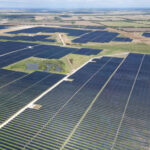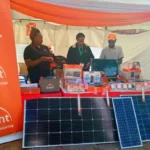
According to a recent study led by scientists from Incheon National University in Korea, a discovery was made on how to create a fully transparent solar cell.
In the study from the Journal of Power Sources, the international team of researchers, led by Prof. Joondong Kim from Korea, demonstrated the first invincible solar cell. This innovative technique relies on a specific part of the solar cell known as the heterojunction, made up of thin films of materials responsible for light absorption. Through the combination of the unique properties of titanium dioxide and nickel oxide semiconductors, these researchers were able to curate an efficient, invincible solar cell.
The transparent solar cell, though widely and popularly known, the ability for scientists and researchers to infuse this idea into daily practical use is a very important new development. It is currently known that the materials responsible for the solar cell being opaque are the semiconductor layers, the system capable of collating and capturing light, converting it into an electrical current. It is on the aegis of this that Prof. Kim and his colleagues studied two potential semiconductor materials that have been discovered by past researchers for their desirable features and characteristics.
The first of the semi- conductor materials is titanium dioxide (TiO2), a popularly known semiconductor, already widely used in the creation of solar cells. Asides its excellent electrical properties, TiO2 is also known to be an environment-friendly and non-toxic effect. It absorbs UV light (a part of the light spectrum invisible to the naked eye) while allowing most of the visible light range.
The second material investigated to make this discovery was Nickel Oxide (NiO), another semiconductor, known to have a high optical transparency. Nickel one of the most abundant elements on Earth, and its oxide can easily be created at low industrial temperatures. It is also an excellent material to create eco-friendly cells.
It’s Five years after the Paris climate agreement, the world’s attention should be shifted thus to the success on the road to a carbon-free future. A very important part of this goal involves energy transformation from fossil fuels to renewable sources. Examples are sun, water, wind and wave energy.
In this lot, solar energy has always been the topmost hope in the scientific community, as it is the most reliable and excess source of energy on earth. Recently, solar cells have become way cheaper, efficient, and environmentally friendly, but the current solar cells appear to be opaque, a limitation that prevents their wider use and application into everyday materials, constrained to being arranged on roofs and in remote solar farms.
A question that resonates on one’s mind will be, Can the next-generation solar panels be integrated into windows, buildings, or even mobile phone screens?
Professor Joondong Kim from the Department of Electrical Engineering at Incheon National University, Korea may seem to have this in the offing of things to come.
Discover more from TechBooky
Subscribe to get the latest posts sent to your email.







